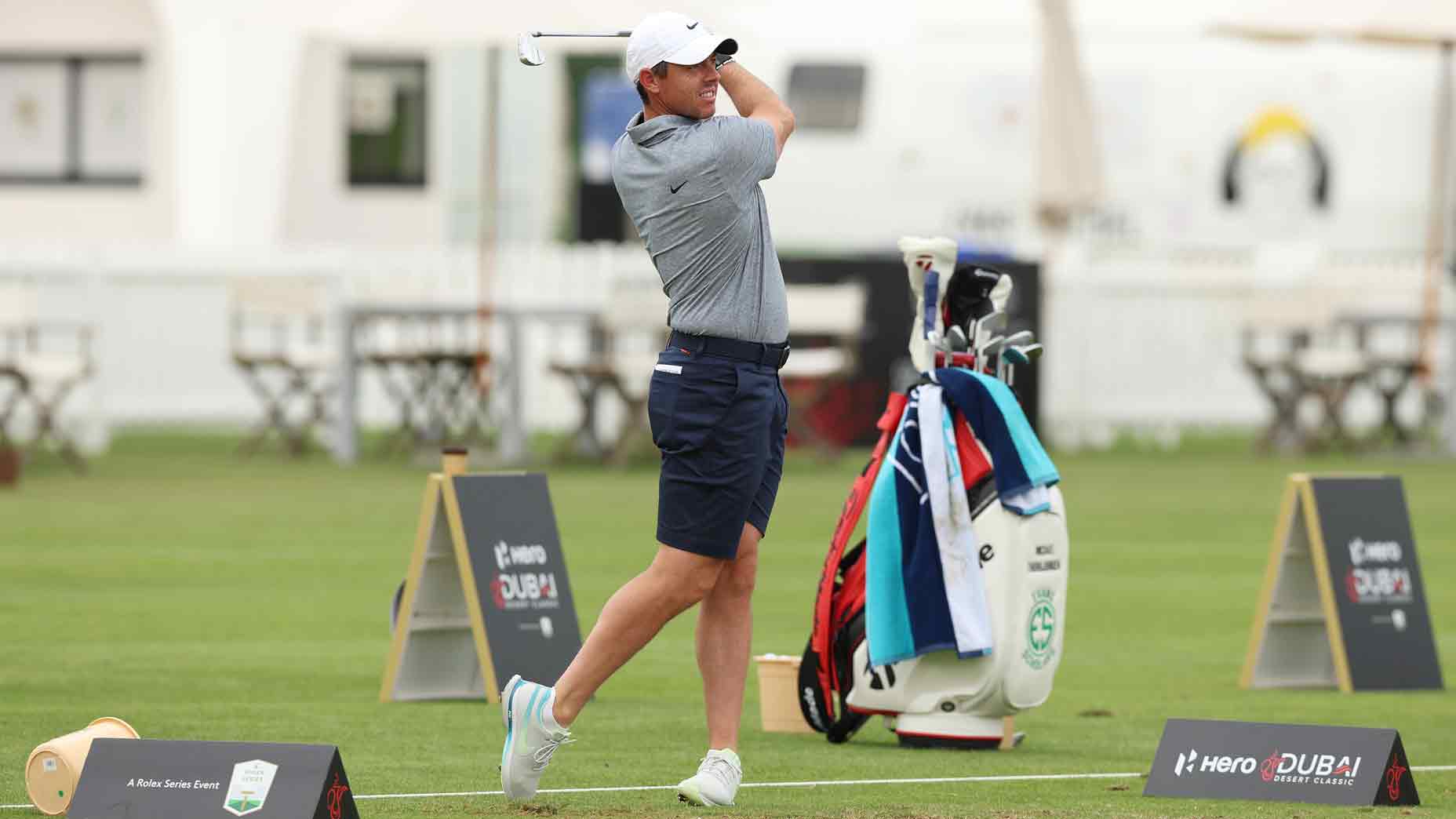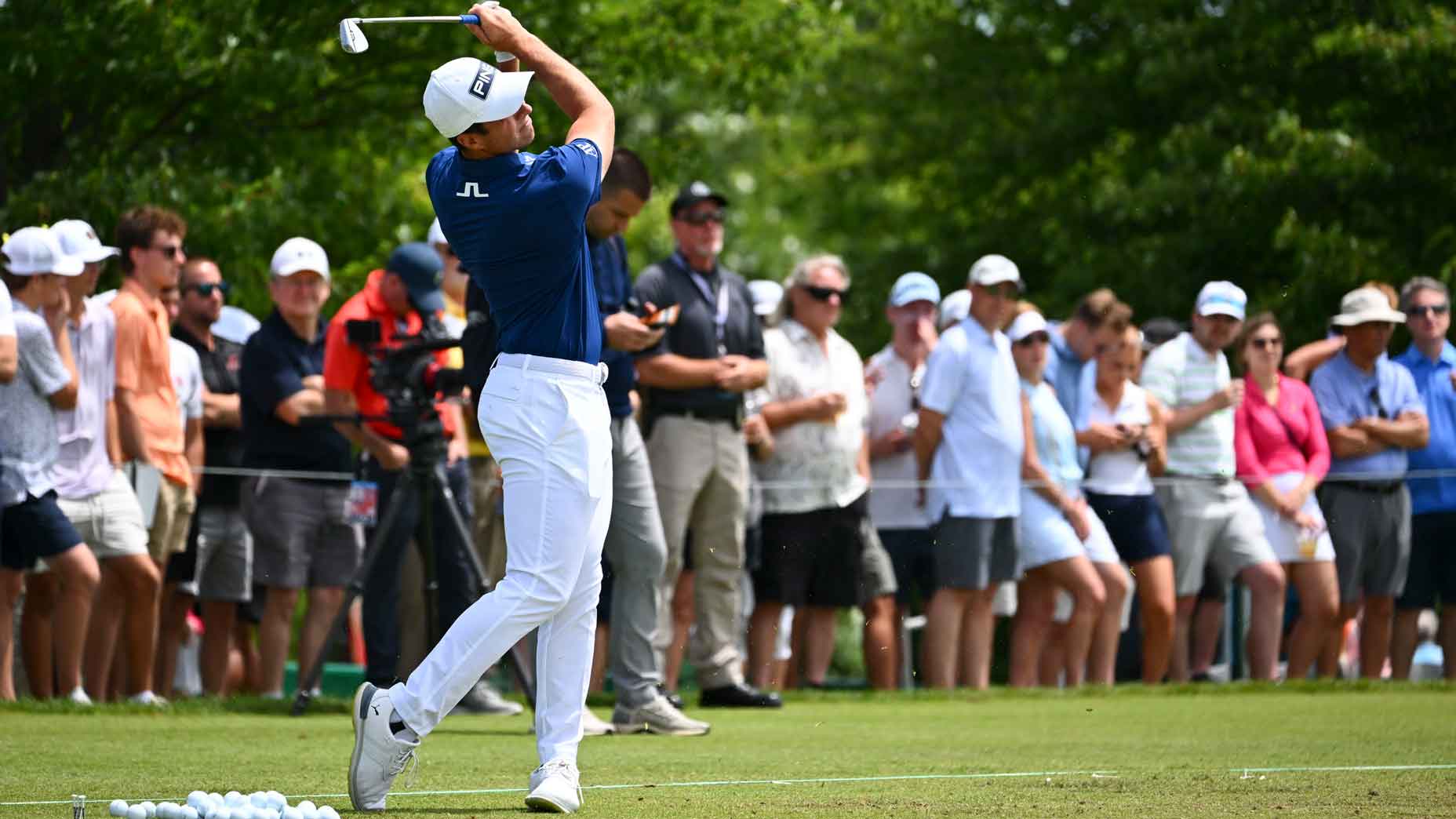
Even if you’re a beginner, you can still make your practice routine mimic a pro’s. Here’s how.
Getty Images
If you’re anything like most amateur players, the last thing you really want to do is pack up your clubs and spend time practicing. If we’re all being honest with one another, it just isn’t very much fun to go beat balls around and never really get answers as to why you hit a good one versus why you hit a bad one.
Sure, some people have golf instructors regularly working with them, have data to dive into, use training aids to help with swing adjustments, and can spend hours at the range working on their game. But the reality for most of us looks like this: arrive at the driving range, notice it’s packed, wait 20 minutes for a bay, hit used and imperfect balls, and go without any sort of data or guidance as to what went right versus what went wrong.
The solution? Often, it’s skipping golf practice altogether and just teeing it up for a round.
But what if I told you there’s a legitimate way to make practice more focused, more intentional, more educational for you, and (gulp!) actually more fun? I’d imagine you’d be interested in hearing about that.
Thanks to GOLF Teacher to Watch Chad Gibbs, you can learn three simple ways to practice like a pro — each of which gives you a north star to follow on your improvement journey. Take a look below to see Gibbs’ tips.
How to mirror your golf practice like a pro player’s
In the years that Gibbs has been coaching, he has observed a large disconnect between a student’s expectation compared to a teacher’s expectation.
“Once a player starts to see improvement, many often assume that they’ve ‘fixed the problem’ and that the feeling will last forever,” he says. “But an instructor assumes that the player will continue the process of meaningful practice.”
This is where Gibbs tells me three ways every amateur can begin to build a practice plan like a pro.
1. Intent
“Whether you’re lightly practicing or putting in intense training each day, you must have intent and a small goal that connects to your overall roadmap,” Gibbs says. “A person’s attention span is often way too short, and there’s limitless amounts of information to easily forget your direction or swerve out of your lane.”
A good example of this is putting practice. Instead of hitting 15 putts from all over the green, simply focus on a very specific area or distance and master that. You’re no longer practicing putting, you’re intentionally practicing putts from four feet that are uphill.
2. Improvement grouping
“Whether you have 50, 100, or even 200 practice balls in front of you, it doesn’t matter — before ever hitting the very first one, always break them into groups of 8,” Gibbs says.
He then provides two reasons why every amateur should do this.
“If you don’t have structure, you’ll unconsciously try to correct the previous range ball — which most golfers do because they want instant feedback and a boost of confidence,” he adds. “By utilizing a group of 8, you’ll be able to isolate what you’re working on much easier, allowing you to be in practice mode rather than fix-it mode.”
3. Feedback mode
“In all levels of practice and skill development, we need feedback to give us trackers or indicators for our improvement,” Gibbs explains. “So it’s essential to keep a notebook or some notes in your phone to refer back to as often as possible.”
Gibbs says the notes should be detailed, but not long. He also reminds players to be honest with themselves, since that’s the only way to really dial in all aspects of your game.
“After each golf practice or training, write a few sentences of your small keys or revelations, adding the the date as a reference point. This allows you to reflect on your sessions and tweak any small adjustments.”
It might be hard to relive a bad range session, but the notes will make a difference for you next time you practice. They’ll provide some guidance as to what you need to work on, reflect on what you already do well, and can serve as a blueprint for how your game-improvement plan should look.
“Practicing and improving in golf is more like reapplying sunscreen than it is having a one-time service on your car,” Gibbs adds. “There’s a lot of information and a lot of variables, so the closer you can practice like a pro, the better chance you’ll have at seeing the results you desire.”
Rapsodo Mobile Launch Monitor (MLM)
$299.99
Game and industry changing Mobile Launch Monitor
The only device to pair iOS camera with radar processing for precise measurement
Immediate swing replay with shot trace technology
10 metrics – 4 measured
iOS compatible only. iPhone or iPad required
Indoors and Outdoors Use
Includes 7-day Premium Membership Trial
View Product





